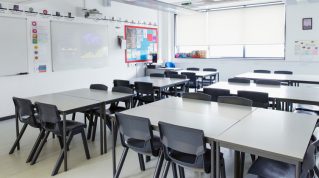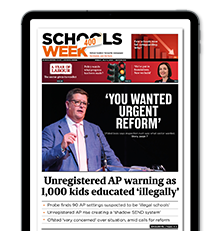The falling rolls crisis appears to have taken a lesser toll on academies than local authority-maintained schools, a study has suggested.
A National Foundation of Educational Research blog published today explores the characteristics of primaries hit by steep falls in pupil numbers from 2017-2018 to 2023-2024.
NFER found “some evidence” that schools which were academies throughout this period were less impacted than those that were local authority maintained.
Primary schools with lower Ofsted ratings saw larger drops in pupil numbers than schools with higher ratings.
Impacted schools were more likely to slash the number of classes, rather than pupils per class.
“Further work is urgently needed to understand how the government, LAs and schools can respond to falling numbers to achieve the best outcomes for children everywhere,” said report co-author Michael Scott, senior economist at NFER.
Academies better off
Nationally, state-funded primary pupil numbers have fallen by 1.5 per cent, meaning there are around 70,000 pupils since 2017.
London made up 50,000 of that, with numbers down 6.8 per cent. Seven regions recorded falls – but more were less than 1.5 per cent.
The West Midlands and the East of England both seen small rises of 0.6 per cent and 0.8 per cent, respectively, over this stretch.
Academies saw smaller drops in pupil numbers. In the ten worst-hit London council areas, local authority schools saw their rolls fall more than double that of academies.
Experts last year said falling rolls could give the academy drive an unexpected boost, after two primaries joined EKO Trust, saying falling rolls on the coast means “the capacity to maintain and develop staff is reducing as the schools shrink”.
While councils are in charge of place planning, and many are leading school mergers or closures, they have no power to shut academies.

Meanwhile, schools rated ‘requires improvement’ or ‘inadequate’ had “a marked drop off” in pupil numbers, relative to school places.
But ‘outstanding’ settings saw hardly any change, while ‘good’ schools tended to see a small increase in unused capacity, moving from being 91 per cent to 88 per cent full on average.

The data suggests state primaries with lower Ofsted ratings are “disproportionately impacted by falling pupil numbers, even after accounting for school capacity”.
Schools tend to prioritise reducing the overall number of classes, rather than just the number of pupils per class.
While there have been funding pressures nationally, they have been “exacerbated in areas of London with the largest falls in pupil numbers”.
















Your thoughts